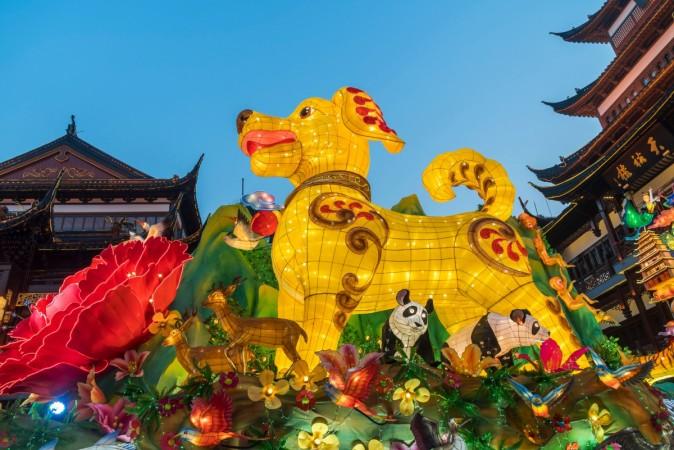
The Chinese New Year 2018 is just around the corner, and Chinese all around the world are gearing up to celebrate the auspicious day on February 16. This time, they are bidding adieu to the rooster and welcoming the Year of the Dog.
China is rich with myths, legends and folk stories about its festivals, all of which have special significance in its culture. The Chinese New Year, which marks the beginning of the lunar calendar, is no different.
From burning bamboos to giving red envelopes, here are the four most interesting myths and legends associated with the Chinese New Year.
Man-eating monster Nian
The Chinese New Year's Day is also called Guo Nian, where Nian can mean both year and the monster named Nian.
According to legends, a sea-dwelling monster with a long head and sharp horns named Nian came out to villages every New Year's Eve and ate people and livestock. In other versions, Nian is described as a mountain-dwelling monster with the body of a bull and the head of a lion.
Every year, people would flee to remote hills to escape the monster, until one day a monk named Hongjun Laozo captured the beast.
The monk pasted red papers on doors, burnt bamboos to make loud crackling noises, lit candles in every house and made everyone wear red clothes to scare away the monster. Even now, people follow these traditions and burn firecrackers to scare Nian away before the arrival of the new year.
Red envelopes for protecting children
Married or elderly people traditionally give children or bachelors of the family red envelopes on this day. The envelopes, also called yasui gian (suppressing Sui money), are believed to bring good luck and safety to children.
The myth associated with this practice involves a demon named Sui who terrified sleeping children, making them too afraid to even cry. Children visited by Sui would develop a high fever and become mentally unstable. To prevent that, parents lit candles and stayed awake with their child through the night.
On one New Year's Eve, parents in one family gave their child eight coins, which the child wrapped and rewrapped in red paper until he became too tired. When Sui tried to touch his head that night, the coins emitted a bright light and turned into eight fairies who protected the child.
The Spring Festival couplets
Chinese people have the tradition of pasting spring couplets on red paper to welcome the new year. This began with the legend of the peach tree about 1,000 years ago when people hung taofu (written charms on peach wood) on their doors.
It is believed that a huge peach tree that stretched for more than 1,500 km grew on a mountain in the afterworld. Two guards named Shentu and Yulei guarded the entrance to the spirit world and caught evil ghosts, sending them to tigers as food.
All ghosts were afraid of the guards and people would write the guards' names on pieces of peach wood to hang on doors. They believed it would scare the evil ghosts away. The tradition was modified between 960 AD and 1279 AD, during the Song Dynasty, and people wrote couplets on peach wood to wish for good luck and happiness.
The Zodiac War
Chinese new years are dedicated to a particular animal among the 12 on the Chinese zodiac, namely the rat, ox, tiger, rabbit, dragon, snake, horse, ram, monkey, rooster, dog and boar. There are several legends about how this came to be.
In one of them, it is believed that the Jade Emperor held a competition thousands of years ago to assign zodiacs to animals. Only 12 of them turned up for the contest and the Emperor gave them a position according to their order of arrival.
Apparently, the rat came riding on the ox's back from a long way and was awarded the first position for its ingenuity. The ox came second, followed by the tiger, rabbit, dragon and so on. The cat could not get a place due to the rat's trick and since then, it has hated rats.

















